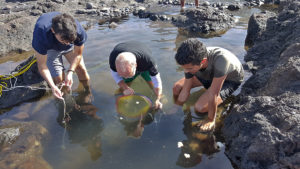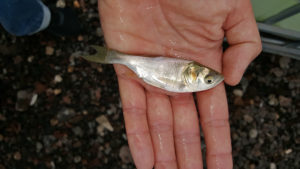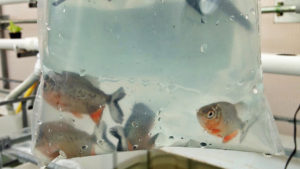A2.3.1: DEMONSTRATIVE ACTION FOR THE DEVELOPMENT OF NEW PRODUCTS FOR THE FEEDING OF AQUATIC ORGANISMS. EVALUATION OF THE ANTIOXIDANT, BIOSTIMULATING AND NUTRITIONAL CAPACITY OF MICROALGAE AND BEACH-CAST MACROALGAE FOR THE FEEDING OF LIVING CATCH AND THE FARMING OF THICKLIP GREY MULLET, CARP, SOLE AND GILT-HEAD BREAM
DESCRIPTION:
The preservation of long chain w3 fatty acids during the enrichment of live prey used in the larval feeding of aquatic organisms, as well as in fish diets, is crucial for the survival and health of the organisms employed in aquaculture. Thanks to the antioxidant properties of fucoxanthin and other bioactive compounds, algae have an excellent potential for the development of new products and anti-rancidity protocols. Algae also have other immunostimulatory effects that are capable of improving the intestinal flora and health of the fish. For this reason, we will evaluate different possible levels of inclusion of macroalgae and microalgae and include them in the corresponding enrichments protocols and diets. The experiments on rotifer and Artemia will be carried out in the facilities of the ULL, while the fattening experiments on mullet and carp in aquaponics systems will be done in the Neotrópico Foundation (http://www.neotropico.org/index.php/la-fundacion).
EXPECTED RESULTS
-
- Evaluation of the new enrichment protocols and diets with different inclusion levels of Navicola salinicola and beach-cast macroalgae biomass with and without fucoxanthin
- Testing of new enrichment protocols with the inclusion of microalgae and macroalgae biomass. Study of their effect on the survival, oxidative stress and long chain w3 level of live prey (rotifer and Artemia)
- Evaluation of new diets supplemented with micro and macroalgae biomass and study of their effect on the model organisms’ growth, oxidative stress, digestive capacity and nutritional value (proximal composition and fatty acids)
- Effect of the new diets on mullets grown in an aquaponic system including Salicornia and Ulva
- Testing the residual biomass obtained after extractive processes, in carp diets (Ctenopharyngodon idella), mullet (Chelon labrosus), sole and bream
PARTICIPANTS
Universidade da Madeira, Universidad de Las Palmas de Gran Canaria, Universidad de Ciencias, de Tecnología y de Medecina (USTM) (Mauritania), Laboratoire d’Electrochimie et des Procédés Membranaires (LAE) Universite Cheikh Anta DIOP (Senegal), Universidad de La Laguna, Instituto Tecnológico de Canarias (Senegal), Universidad de La Laguna, Instituto Tecnológico de Canarias









